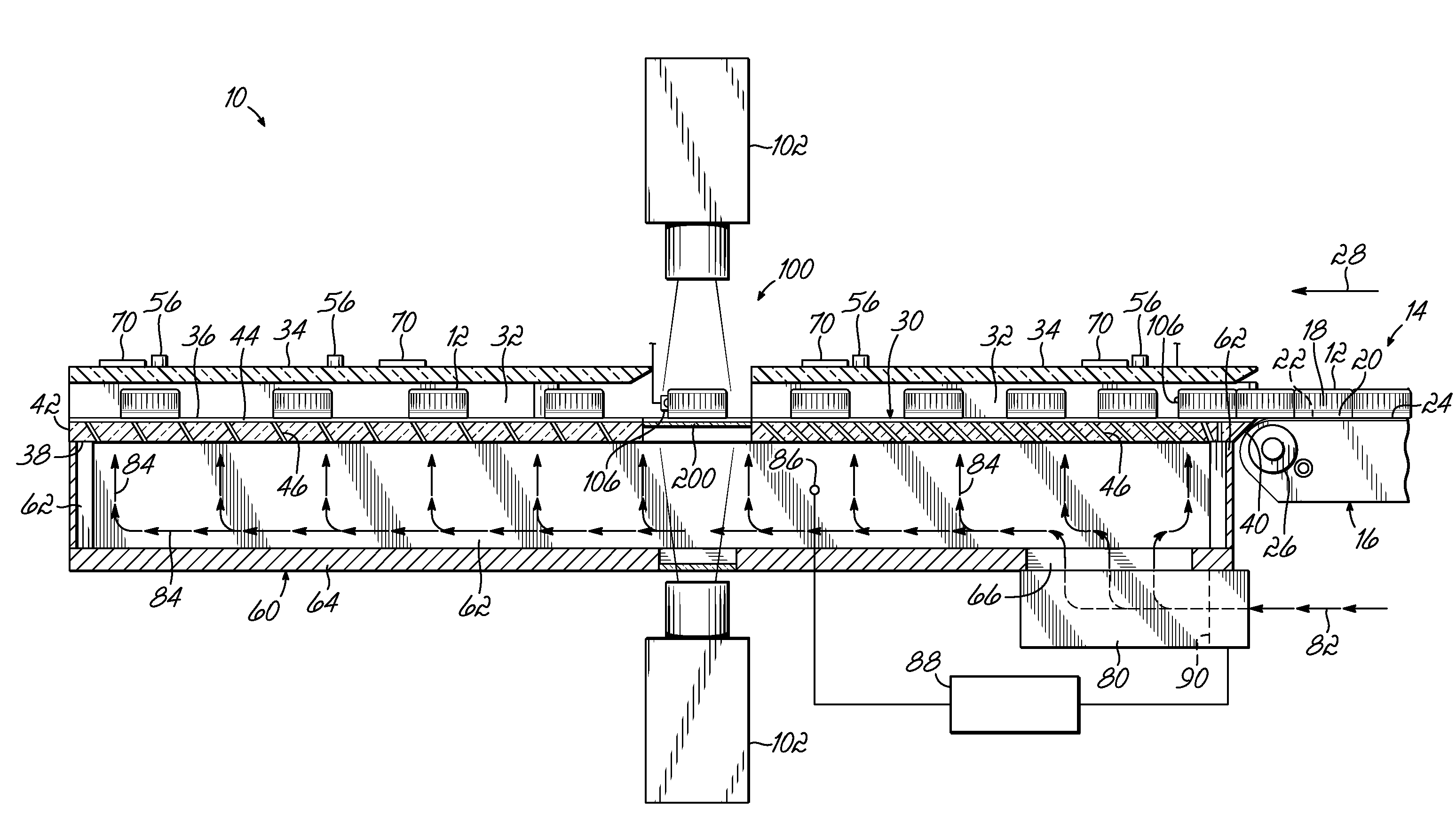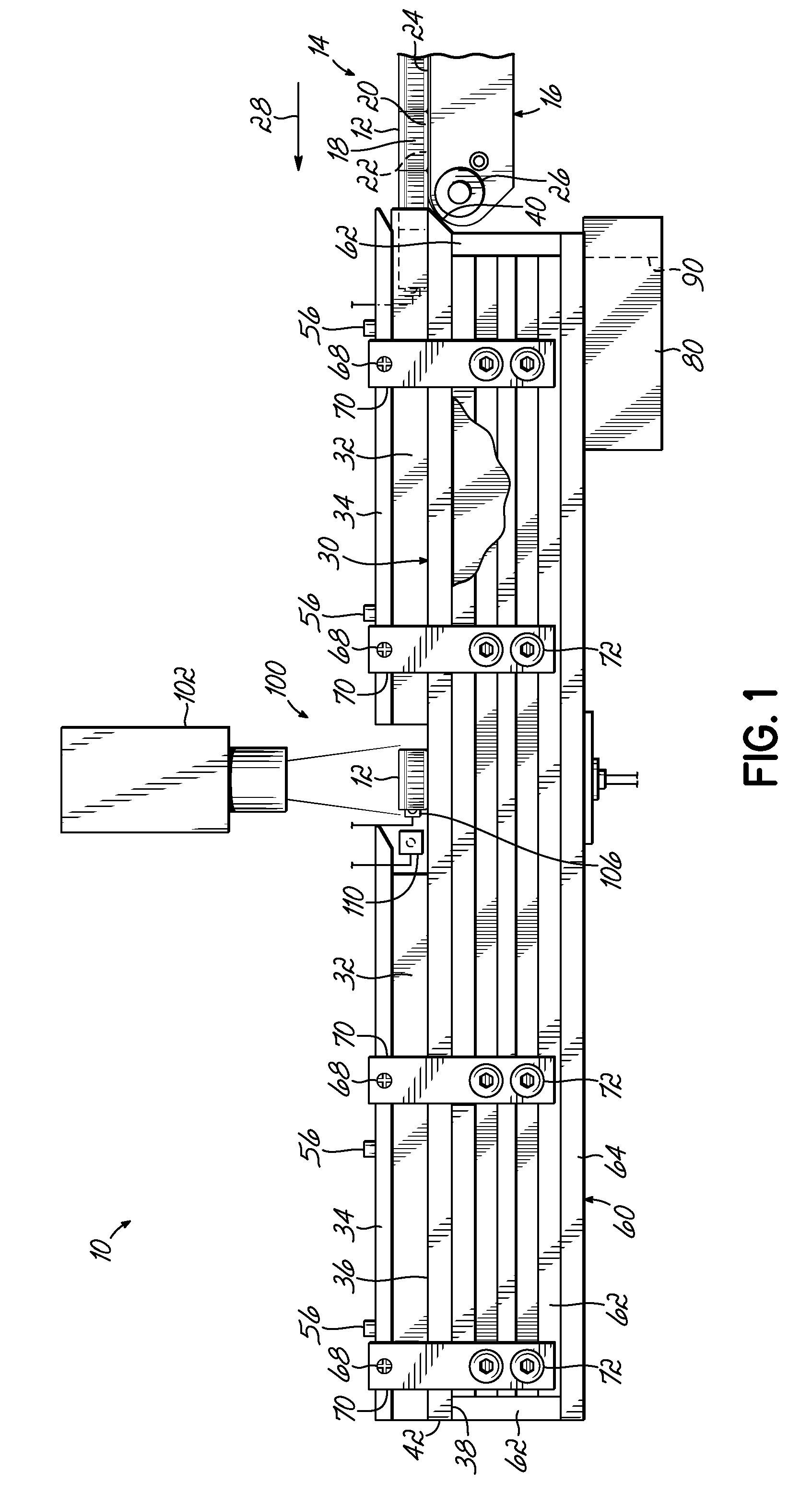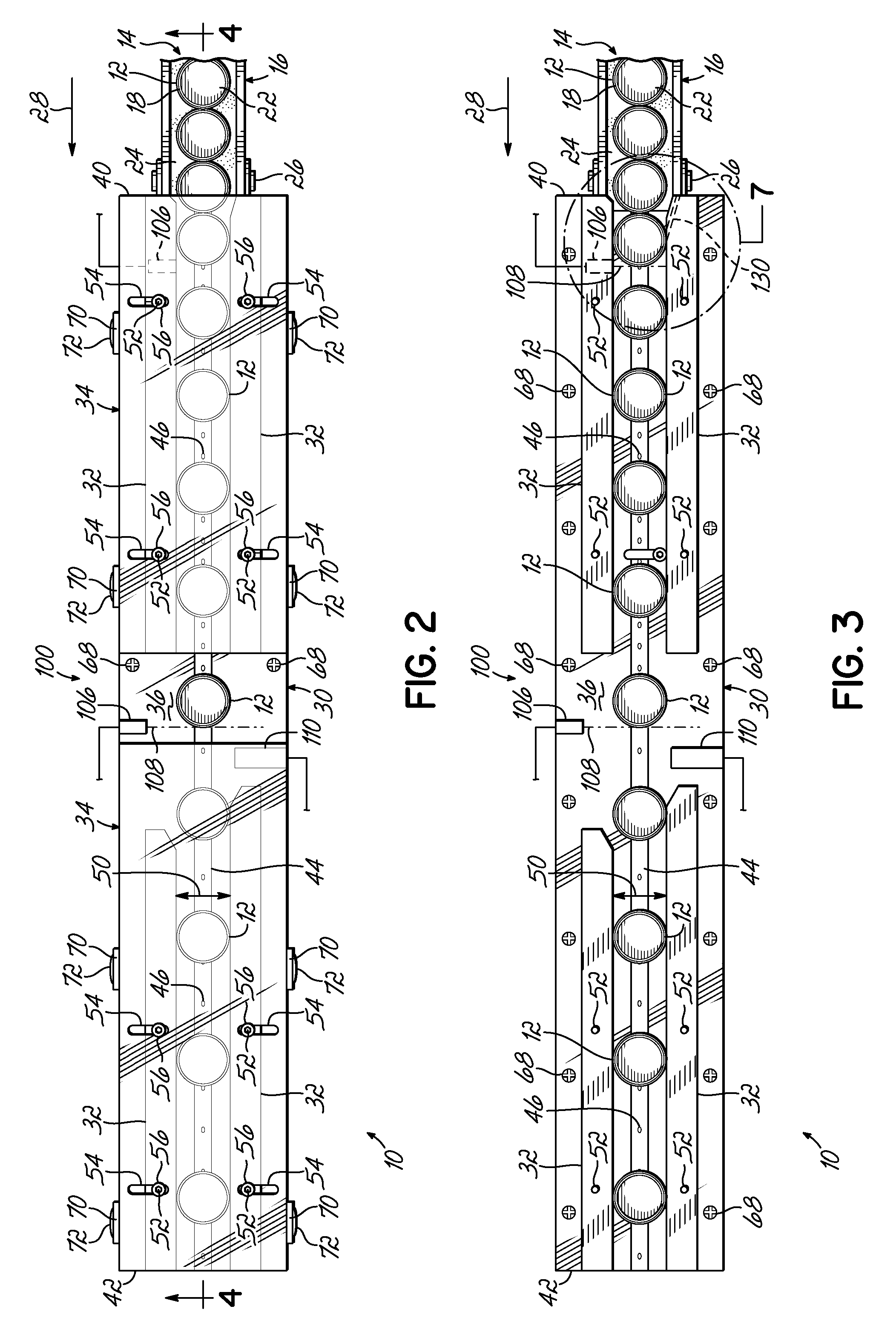Air separator conveyor and vision system
a conveyor and air separator technology, applied in the field of inspection systems of articles, can solve the problems of reducing the precision of the inspection process, reducing the accuracy of inspection, so as to achieve the effect of more precision
- Summary
- Abstract
- Description
- Claims
- Application Information
AI Technical Summary
Benefits of technology
Problems solved by technology
Method used
Image
Examples
first embodiment
[0026]Referring to FIGS. 1-9, this invention of an air conveyor vision inspection system and associated method for industrial work pieces is shown. The inspection system 10 is used to individually inspect each of a number of work pieces 12 and determine if each work piece 12 meets quality control standards. These work pieces 12 can be any variety of industrially produced items, such as plastic molded bottle caps as shown in FIGS. 1-11. For bottle caps 12, a batch 14 of the caps 12 is created using an injection molding process and then delivered by a feed conveyor 16 or other means to the inspection system 10. Bottle caps 12 made in this manner typically include a peripheral skirt 18 projecting from a base or end wall 20 and a liner 22 may also be inserted into the cap 12.
[0027]As shown in FIG. 1, the inspection system 10 processes work pieces or caps 12 from a feed conveyor 16, which comprises a belt 24 trained to travel around at least two rotating rollers 26 (of which one is shown...
second embodiment
[0037]this invention is shown in FIGS. 10-11. The second embodiment contains all the elements as the first embodiment described in detail above and in FIGS. 1-9, as well as one additional feature. Instead of the inspection conveyor 30 being made completely out of translucent plastic material, an inspection window 200 is placed in the inspection conveyor 30 instead of plastic material at the inspection station 100. This window 200 can be used where the inspection conveyor 30, guide rails 32, and guide rail cover 34 are each made of a different material than transparent or translucent plastic. The window 200 preferably produces a high diffusion of light and may be created out of glass such as opal glass. The glass segment of the inspection conveyor 30 in this embodiment does not interfere with or change the orientation of air holes 46 extending throughout the inspection conveyor 30.
[0038]The second embodiment also enables a user to set up the inspection station elements in different w...
PUM
| Property | Measurement | Unit |
|---|---|---|
| diameter | aaaaa | aaaaa |
| angle | aaaaa | aaaaa |
| inner diameters | aaaaa | aaaaa |
Abstract
Description
Claims
Application Information
 Login to View More
Login to View More - R&D
- Intellectual Property
- Life Sciences
- Materials
- Tech Scout
- Unparalleled Data Quality
- Higher Quality Content
- 60% Fewer Hallucinations
Browse by: Latest US Patents, China's latest patents, Technical Efficacy Thesaurus, Application Domain, Technology Topic, Popular Technical Reports.
© 2025 PatSnap. All rights reserved.Legal|Privacy policy|Modern Slavery Act Transparency Statement|Sitemap|About US| Contact US: help@patsnap.com



